The DRIHM project and its services
Contributed by Antonio Parodi
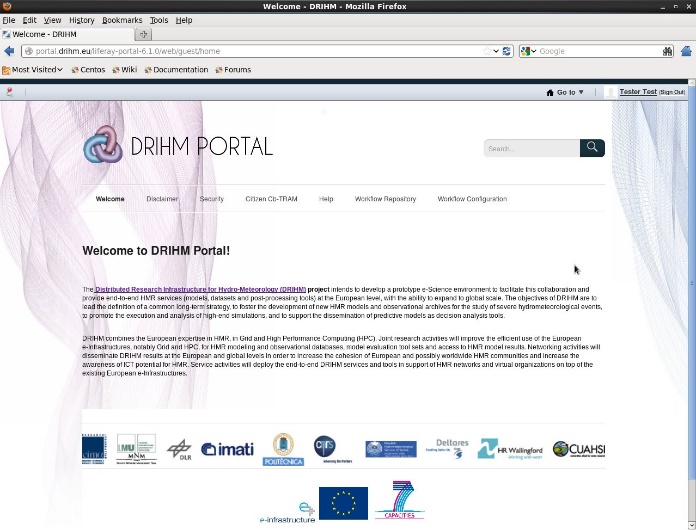
DRIHM Portal – Home page
The DRIHM project (www.drihm.eu) aims at setting the stage for a new way of doing Hydro-Meteorological Research (HMR).
In particular, the goal is the development of a prototype e-Science environment that allows users, from researchers to environmental agencies and citizen scientists, to access and combine hydro-meteorological data and models using integrated HMR services and user-friendly interfaces able to shield them from the underlying e-Infrastructure complexities and specific implementations. The DRIHM Portal is the scientific gateway developed by the project to shape this vision and it represents the access point to the DRIHM services.
The DRIHM Portal
The portal supports hydro-meteorology (HM) researchers in the design of new experiments: a full simulation which starts with the numerical weather prediction of the precipitation event down to the modeling of the impact on urban areas requires the execution of several models organized trough a workflow. It means the possibility to combine in cascade meteorological models with hydrological and finally hydraulic models.
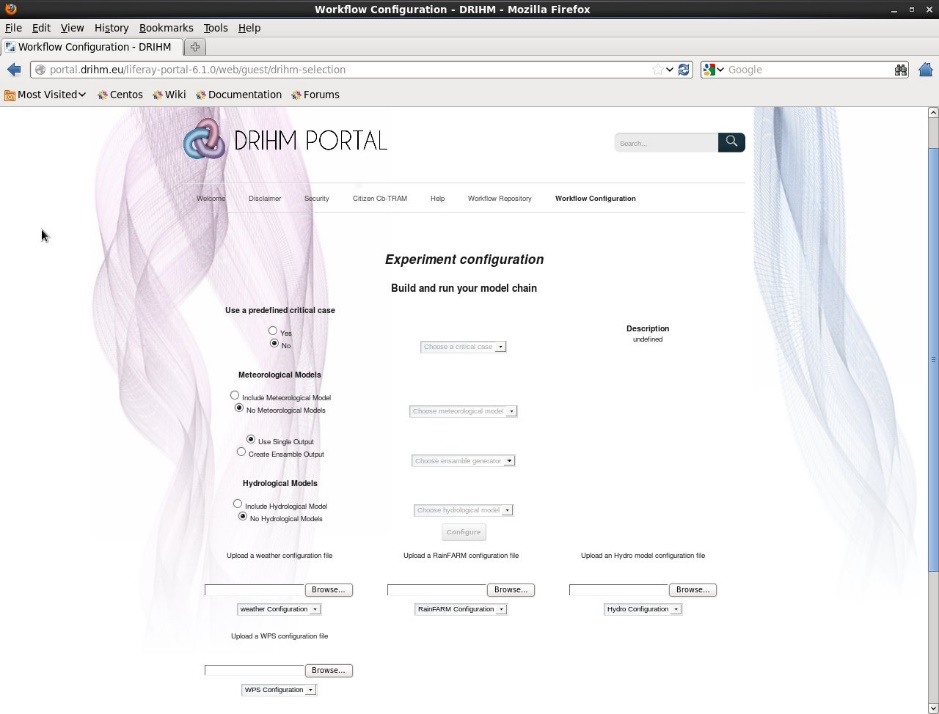
Interface to configure the experiment
The portal exposes a simple interface that let the user to compose the desired workflow, and gives the possibility to easily swap among analogous model within a workflow.
Presently, the models available for a workflow are the meteorological such as WRF-ARW and hydrological models such as RIBS and DRIFT, but new modeling resources will be integrated soon.
The user is driven through parameter specification of the selected models and finally to job submission. The portal generates all configuration files and handles the execution on the best suited computational resource. It is possible to store, seek and download the configurations files previously created. Among other benefits, this enables the evaluation of the impact of different models or configuration parameters, thus speeding-up the HM research.
Combination of different models in a chain, and the ability to easily swap among analogous models required a large effort in model standardization, pursued in DRIHM by adopting OGC standards for model and data interoperability.
Beyond the interface, the DRIHM portal takes care of the exploitation of a heterogeneous computing infrastructure composed by PRACE and EGI resources and dedicated clusters.
Interoperability among different e-infrastructures exploit the gUSE/WS-PGRADE technologies that enable the access a large number of Grid and Cloud infrastructures. In fact, the portal is directly derived from gUSE/WS-PGRADE.
The portal is further evolving with a new set of user-driven requests: in-place analysis of simulation results and ability to share experiment with the HMR community as well as with citizen scientists. The DRIHM portal is available at http://portal.drihm.eu.
Since the main goal of the DRIHM project is to provide IT services for the creation and execution of Hydro-Meteorological Research (HMR) simulation chains over European e-Infrastructures, it is of paramount interest to adhere to the transparency principle underlying distributed systems in general and Grids in particular.
Consequently, HMR models, tools and data sets need to be deployed in such a way that both location and migration transparency is achievable for data sets, models and application level workflows. The figure below demonstrates the transition from classic isolated HMR applications (left side) to transparency respecting “DRIHMified” solutions (right side).
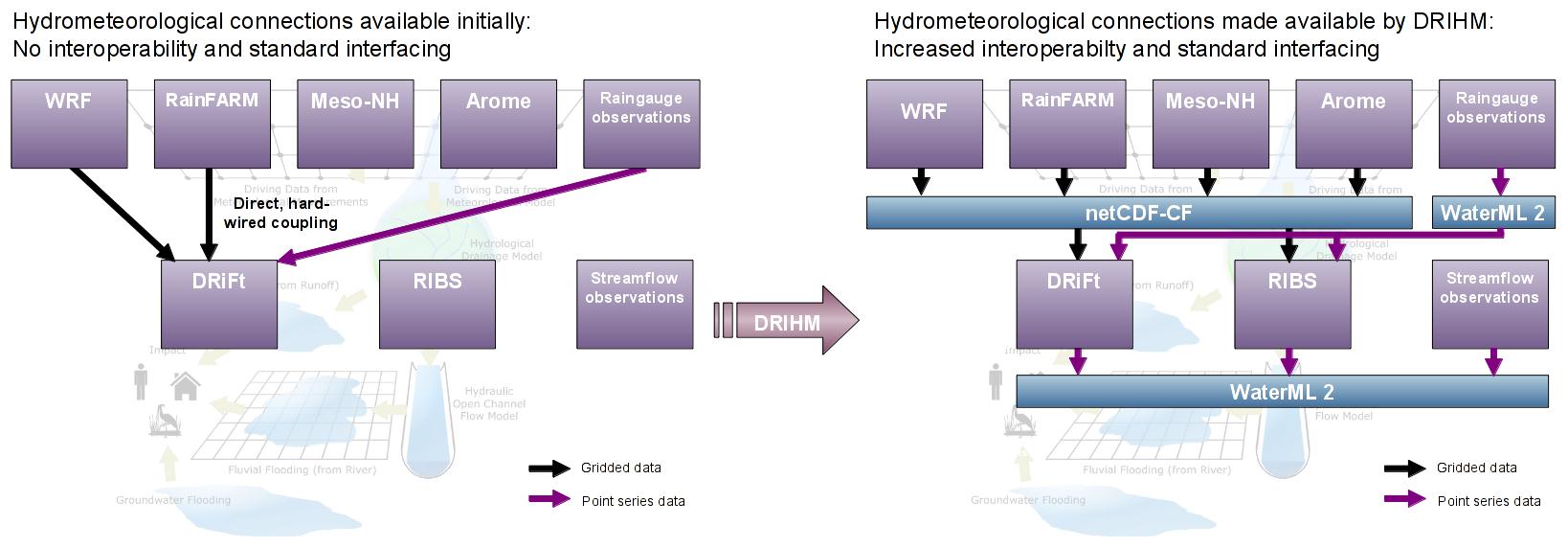
Transition from isolated HMR applications to transparency respecting “DRIHMified” solutions
First applications
As the first DRIHM services were being set up, the flash-flood case of November 4th, 2011 in Genoa, Italy was chosen as critical case for Hydro-Meteorological (HM) experiment suites.
At the beginning of the project, this case was simulated with the state-of-the-art models and tools available at that time to represent the baseline HM experiment suites from where going ahead. Thus, only the WRF-ARW model and RainFARM were available to produce rainfall fields used as input for the only one hydrological model, DRiFt, to predict the discharges at the outlet from the Bisagno river. It has implied that each model was configured with different, specific tool by requiring an extensive knowledge of each one.
To overcame this need, the DRIHM portal is now available to provide a user-friendly way to configure the models without being experts in all of their components. Furthermore, the development of the Meteorological Model Bridge (MMB) allows to the outputs of atmospheric models to be produced in a common format acceptable by all the hydrological models implemented in the DRIHM e-insfrastructure (see figure below).
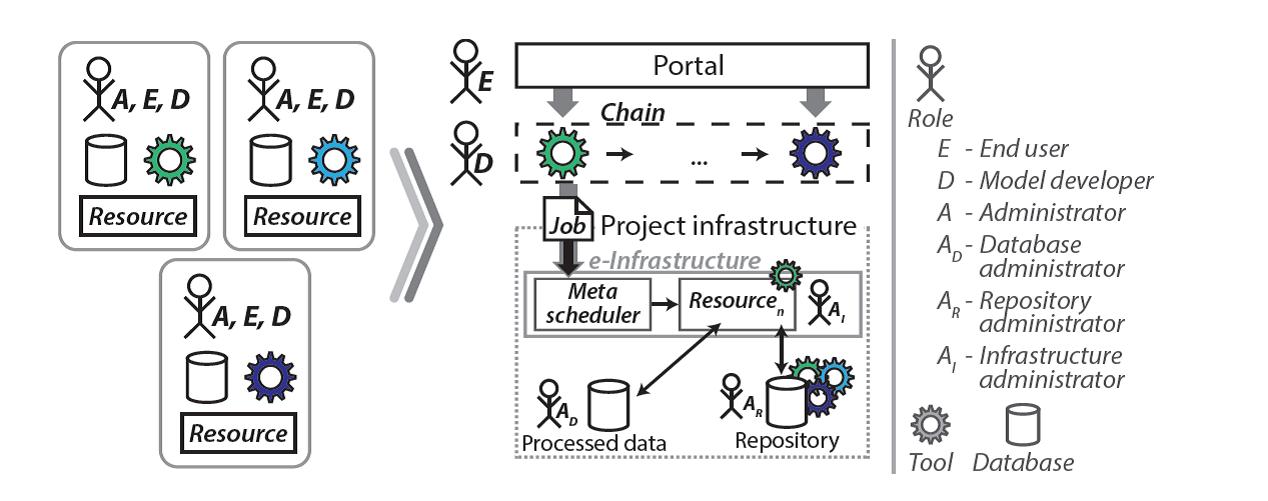
Diagram representing basic (left panel) vs. advanced (right panel) experiment suites for the Genoa case. The first row of purple boxes represents rainfall sources of experiment suite 1, while the second row represents discharge Models and observations of experiment suite 2. The bluish-grey boxes represent the standard interface formats (netCDF-CF and WaterML 2) that have been introduced in the advanced experiment suites
For the advanced experiment suites expected for the end of the second year of the project, the list of meteorological models has been improved with Meso-NH, Arome and WRF-NMM, while the RIBS and HBV models have been added amongst hydrological models. Through the use of the DRIHM portal, a significant number of HM workflows are possible so that for the Genoa critical case more than a thousand different HM workflows have been run.
In the figure below, two meteorological fields from three different atmospheric models are plotted. Differences due to the horizontal resolutions (2.5 km for Arome, 1 km for WRF-ARW, and 500 m for Meso-NH) are evident from the level of detail of the meteorological fields in each plot.
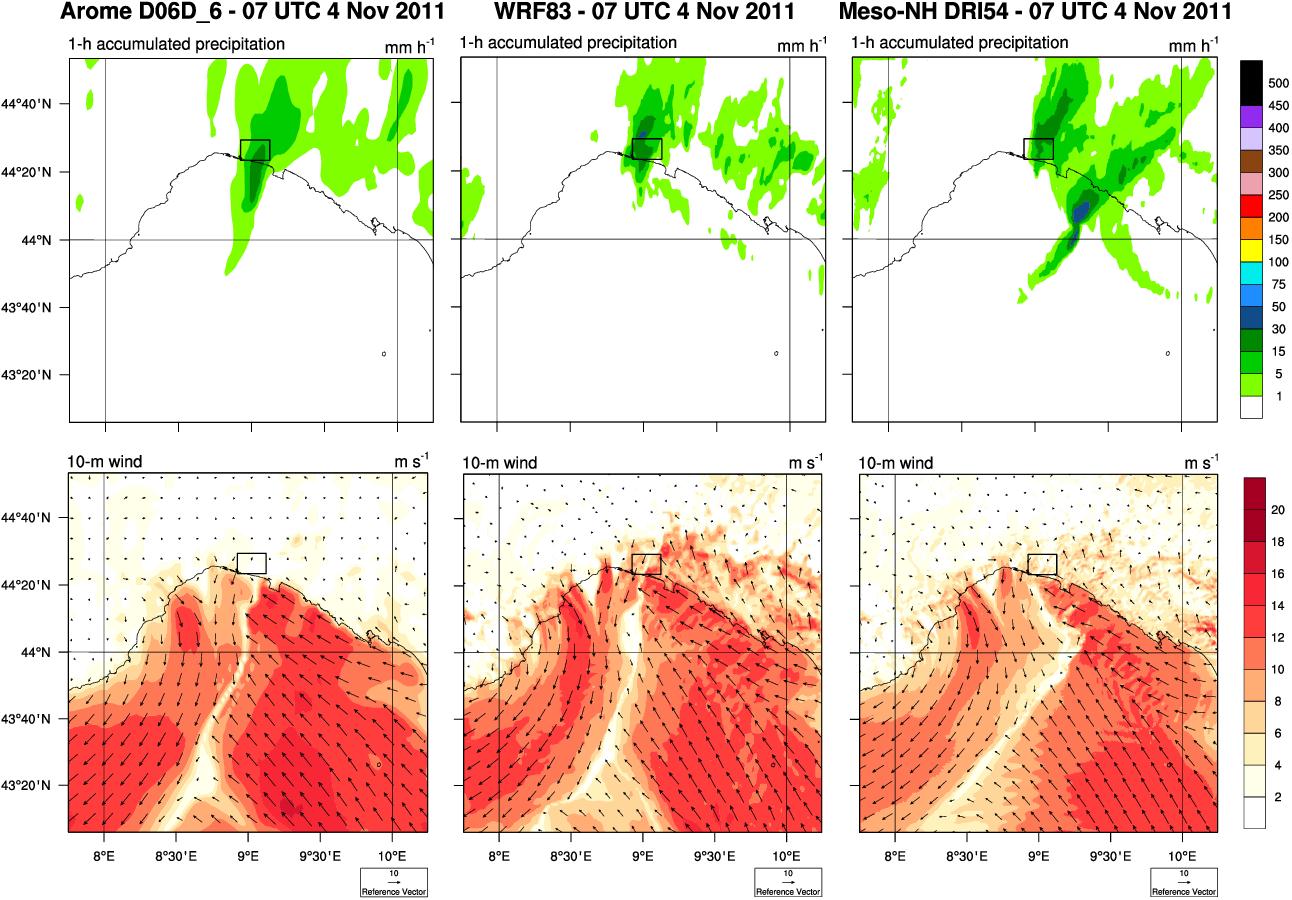
Simulated meteorological fields for the Genoa critical case on November 4th, 2011, at 07 UTC: one-hour accumulated precipitation (upper row) and wind at 10 m above the ground (wind speed in colour shades) (lower row). The three columns correspond to a member of the Arome ensemble (left), WRF-ARW (middle), and a member of the Meso-NH ensembles (right), respectively. The Bisagno watershed is located in the black rectangle
More advanced conclusions arise by looking how low-level wind impacts to the location of the convergence line and consequently on the spatial distribution of the precipitation. A more predictable location of precipitation becomes crucial especially for small size catchment as the Bisagno one. Similarly, the huge number of HM workflows has generated values of discharges, which have been combined and compared through the use of WaterML 2.
Though these results are still being analysed, there is no doubt that they will shed light on the physical processes that led to the tragic flash-flood of Genoa and they will help researchers to design more efficient early-warning flash-flood prediction systems.
For more information…
If you are interested in the latest achievements of the project you can register on the DRIHM User Forum (http://www.drihm.eu/index.php/forum) and also apply for the DRIHM Summer School (http://www.drihm.eu/index.php/documents/drihm-summer-school-2014).
0 comments